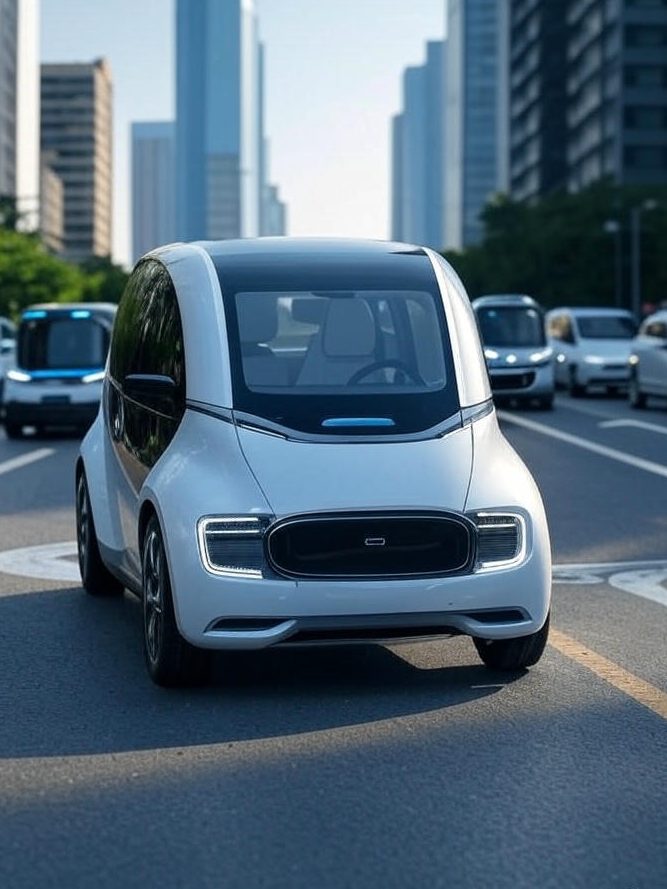
Autonomous driving is reshaping the transportation landscape, promising safer, efficient, and accessible mobility. Self-driving vehicles, powered by cutting-edge technologies, are no longer sci-fi fantasies but tangible innovations navigating real-world roads. This blog explores the trends, challenges, and transformative potential of autonomous driving in 2025, diving into its impact on society, economy, and urban planning.
The Core of Autonomous Driving
Self-driving cars rely on a symphony of advanced systems. Artificial Intelligence (AI) and machine learning algorithms process vast datasets, enabling vehicles to perceive environments, make decisions, and adapt to dynamic conditions. LiDAR, radar, and high-definition cameras create 360-degree maps, detecting obstacles, pedestrians, and traffic signals with precision. Vehicle-to-Everything (V2X) communication allows cars to interact with infrastructure, other vehicles, and cloud networks, enhancing situational awareness.
Sensor fusion integrates these inputs, ensuring robust performance in diverse scenarios—rain, fog, or bustling city streets. Meanwhile, over-the-air (OTA) updates keep software current, improving functionality without physical interventions. These technologies converge to deliver Level 4 and Level 5 autonomy, where vehicles operate with minimal or no human input.
Trending Innovations in 2025
1. Edge Computing for Real-Time Decisions
Autonomous vehicles generate terabytes of data daily. Processing this in real-time demands edge computing, which reduces latency by analyzing data locally rather than relying solely on cloud servers. This ensures split-second reactions to hazards, boosting safety.
2. 5G Connectivity
Ultra-fast 5G networks enable seamless V2X communication. Cars share data instantly with smart traffic lights, road signs, and nearby vehicles, optimizing traffic flow and preventing collisions. 5G also supports remote driving in edge cases where autonomy falters.
3. Sustainable Autonomous Fleets
Electric self-driving fleets are gaining traction, aligning with global sustainability goals. Companies like Tesla, Waymo, and Cruise deploy battery-powered robotaxis, reducing emissions. Inductive charging and solar-integrated vehicles further enhance eco-friendliness.
4. AI-Driven Predictive Maintenance
AI monitors vehicle health, predicting component failures before they occur. This minimizes downtime, extends vehicle lifespans, and reduces costs for operators of autonomous shuttles and delivery vans.
5. Urban Air Mobility (UAM)
Autonomous driving extends beyond roads. eVTOL (electric Vertical Take-Off and Landing) aircraft, or flying taxis, integrate self-driving tech for urban skies. Companies like Joby Aviation are testing prototypes, promising congestion-free commutes.
Societal and Economic Impacts
1. Enhanced Safety
Human error causes over 90% of road accidents. Autonomous vehicles, with their tireless vigilance, could slash crash rates. Advanced collision avoidance systems and behavioral modeling ensure safer interactions with unpredictable human drivers.
2. Mobility for All
Self-driving cars empower the elderly, disabled, and non-drivers. Accessible robotaxis provide independence, bridging gaps in public transit. Rural areas, often underserved, benefit from on-demand autonomous shuttles.
3. Economic Shifts
Autonomous driving disrupts industries. Ride-hailing and logistics thrive with cost-efficient driverless fleets. However, trucking and taxi jobs face displacement risks, necessitating reskilling programs. Meanwhile, insurance models evolve, focusing on software liability over driver fault.
4. Urban Redesign
Cities adapt to autonomous vehicles. Smart corridors prioritize driverless traffic, reducing congestion. Parking lots shrink as shared fleets dominate, freeing land for green spaces or housing. Traffic signal optimization minimizes delays, enhancing urban livability.
Challenges on the Road Ahead
1. Regulatory Hurdles
Governments grapple with standardizing autonomous driving laws. Safety certifications, data privacy, and cybersecurity regulations vary globally, slowing deployment. Harmonizing policies is critical for scaling.
2. Ethical Dilemmas
Programming vehicles to handle moral quandaries—like prioritizing pedestrian safety over passengers—sparks debate. Transparent ethical frameworks are essential to build public trust.
3. Public Acceptance
Despite advancements, skepticism persists. High-profile accidents fuel distrust. Education campaigns and transparent testing can demystify autonomy, showcasing its benefits.
4. Infrastructure Gaps
Many roads lack smart infrastructure like V2X-compatible signals. Retrofitting cities is costly and time-intensive. Public-private partnerships are key to bridging this gap.
5. Cybersecurity Risks
Connected vehicles are vulnerable to hacking. Robust encryption, intrusion detection, and zero-trust architectures are vital to safeguard against attacks.
The Global Race for Autonomy
The autonomous driving market is fiercely competitive. China leads with state-backed initiatives and vast testing zones. Baidu’s Apollo platform operates robotaxis in multiple cities. In the U.S., Waymo expands its driverless services, while Tesla pushes for Full Self-Driving (FSD) capabilities. Europe emphasizes safety, with Volkswagen and Mercedes-Benz advancing Level 3 systems. Emerging players in India and Singapore focus on affordable autonomy for dense urban markets.
The Road to a Driverless Future
By 2030, analysts predict autonomous vehicles will dominate urban transport. Shared mobility will eclipse car ownership, reducing traffic and emissions. Freight logistics will transform with driverless trucks, streamlining supply chains. However, achieving this vision requires collaboration among tech giants, automakers, policymakers, and communities.
Public trust hinges on transparent innovation. Pilot programs, like autonomous shuttles in campuses or delivery bots in suburbs, showcase practical benefits. Meanwhile, workforce transition plans address job displacement, ensuring inclusive progress.
Conclusion
Autonomous driving is more than a technological leap—it’s a societal revolution. From safer roads to inclusive mobility, its potential is immense. Yet, overcoming regulatory, ethical, and technical challenges is crucial. As cities evolve and innovations accelerate, the dream of a driverless world inches closer. The journey is complex, but the destination promises a future where mobility is smarter, greener, and universally accessible.









